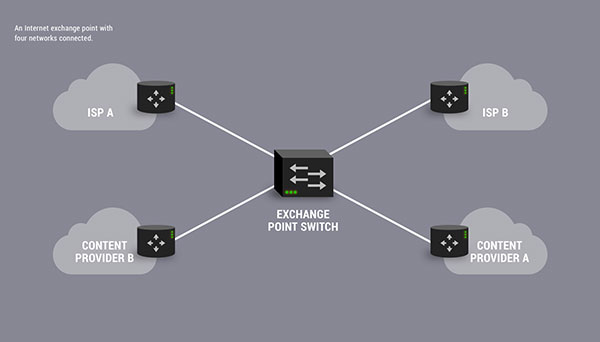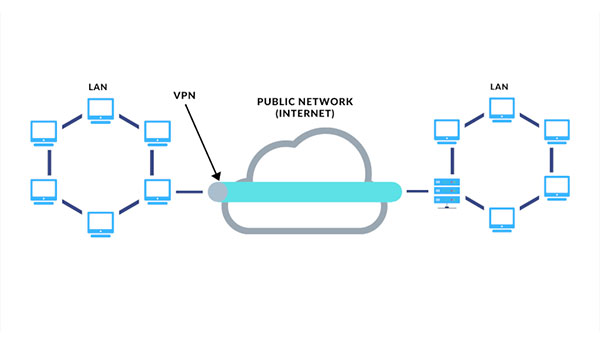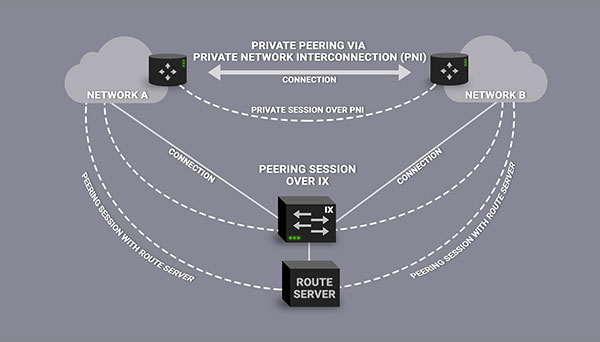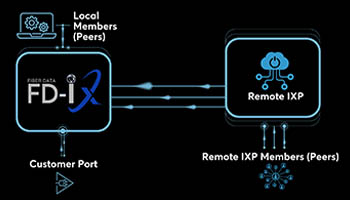Title: Driving Efficiency: How Internet Exchanges Lower Costs for Members
Introduction:
In the intricate web of global connectivity, the role of Internet Exchanges (IX) emerges as a game-changer, offering an array of benefits to its members. Beyond the simple act of facilitating data exchange, an Internet Exchange serves as a cost-effective solution, particularly for its members. In this blog, we will explore the many ways in which Internet Exchanges contribute to lowering costs for their members, fostering a more efficient and economically sound digital landscape.
- Reduced Transit Costs: One of the primary ways in which Internet Exchanges benefit their members is by significantly reducing transit costs. By providing a direct peering platform where networks can exchange traffic without the need for intermediaries, members can bypass costly transit services. This not only leads to immediate financial savings but also enhances the overall efficiency of data exchange.
- Operational Efficiency: Internet Exchanges streamline the process of data routing and peering, reducing the complexity of network operations for their members. This operational efficiency translates into cost savings through reduced manpower requirements, simplified network management, and minimized technical complexities. Members can allocate resources more effectively, focusing on innovation rather than navigating intricate network configurations.
- Cost-Effective Scalability: As members experience growth in their network traffic, Internet Exchanges offer a cost-effective solution for scalability. Instead of incurring escalating costs associated with increased data transfer, members can leverage the scalable infrastructure of the exchange to handle higher volumes of traffic without proportionately increasing expenses.
- Diverse and Redundant Connectivity: Internet Exchanges provide members with diverse and redundant connectivity options. This not only ensures network resilience in the face of potential failures or disruptions but also eliminates the need for members to invest heavily in redundant infrastructure. The cost savings associated with optimized connectivity options contribute to the financial benefits of joining an Internet Exchange.
- Avoiding the Middleman: By directly peering with other networks within the exchange, members avoid the costs associated with third-party intermediaries. Traditional transit services often involve multiple layers of providers, each adding a layer of cost. Internet Exchanges eliminate the need for these middlemen, allowing members to exchange traffic more directly and cost-effectively.
- Global Reach without Exorbitant Costs: Internet Exchanges provide a gateway to global connectivity without the hefty price tag. Members can establish direct connections with peers worldwide, fostering collaboration and efficient data exchange. The cost-efficient nature of Internet Exchanges makes global reach more accessible for smaller networks and emerging players in the digital landscape.
- Lower Capital Expenditure: Joining an Internet Exchange reduces the capital expenditure required for network infrastructure. Members can leverage the existing, shared infrastructure of the exchange, eliminating the need for substantial upfront investments in networking hardware and facilities. This lower capital expenditure is particularly advantageous for organizations seeking cost-effective solutions for their network expansion.
Conclusion:
In the realm of digital connectivity, the benefits of an Internet Exchange extend beyond the simple exchange of data. For members, the cost-effective nature of joining an exchange becomes a pivotal factor in streamlining operations, reducing transit costs, fostering scalability, and navigating the complexities of global connectivity. As we continue to navigate the digital landscape, Internet Exchanges stand as catalysts for lowering costs, driving operational efficiency, and empowering networks of all sizes to thrive in the interconnected world.






















